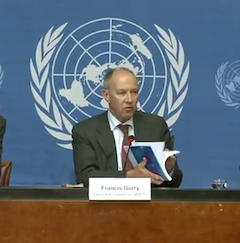Report analyzes trends in patents: China, universities big players


A recently released report (available as a PDF here) by The World Intellectual Property Organization (WIPO), a United Nations agency, illustrates how competition for patents is affecting global competition in the innovation arena.
The authors of The World Intellectual Property Report 2011: The Changing Face of Innovation conclude that ownership of IP is a key strategy for engineers and designers at corporations, universities, and public research organizations alike.
Notable findings in the report (released on November 14):
- Internationally, royalty and licensing fee revenue increased from $27 billion in 1990 to approximately $180 billion in 2009 (the latest available data). Royalty and licensing growth has outpaced growth in global GDP
- University and public-research organizations filings under the WIPO’s Patent Cooperation Treaty (PCT) have grown from nearly zero in the 1980s to more than 15,000 in 2010
- In 1993, U.S. companies accounted for 36.8% of global R&D spending; in 2009, U.S. R &D spending shrunk to 33.4% of the worldwide total. In 1993, China accounted for 2.2% of the global total; in 2009, China's R&D spending grew to account for 12.8%
- In 2010, the number of unprocessed patent applications worldwide was 5.17 million
Clearly, the report confirms that patents are highly valued, and that new players in the innovation field have emerged in the last twenty years--not only China, but also universities. But beyond this conclusion, the data presented also points to a crucial challenge: what to do with the huge backlog of aspiring patent seekers? Without innovation in the patent process itself, inventors filing for IP ownership may be met with frustrating delays, versus protection for their ideas in an increasingly competitive international market.
This post was originally published on Smartplanet.com